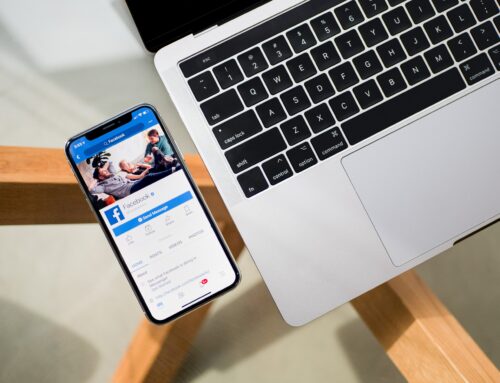The Unforeseen Signs Your Campaign is Driving More Value than You Think
Maybe you’ve already worked with a social media agency and are looking for another that can get you to the next level with your social marketing. Inevitably the discussion of social media ROI will come up, and rightly so. Your social media agency has to provide a way for you to measure this, and most social media companies have their own way of doing this. Ultimately if your social media agency cannot help you measure the ROI from your activities, then they, in turn, may not be worth the investment. But let’s keep an open mind and define what social media ROI is.
Ever since the early days of social media adoption by businesses, the question of the best way to measure ROI has been pondered. Here is the short answer:
There is no one best way. So if you think that your agency is ‘doing it wrong’ because they don’t measure social ROI the same way another agency does, take a step back. Your agency may actually be measuring more of your conversions than you thought.
The reason for this is that every business is different. Not everyone is going to start at the same place. Some companies will build in goals as soon as they begin with their social accounts, and others will jump in just to ensure they are ‘on social media’, with no initial strategy for their presence. Adhering to a generalized right or wrong way to measure ROI can be a waste of your time. What you need to do is measure social’s importance to you, in terms that matter to you. Ideally you will align your social strategy with your overall marketing goals. Social is part of how you build your brand visibility. It is one vehicle you can use in conjunction with your other tools and tactics to get your message into the hands of your audience.
Let’s take a look at how you can approach this, and build a framework so you can jump in anywhere on this timeline and start measuring.
Step 1) If you are a newbie to social media you will want to decide which social networks you want to use to reach your audience. Your social media agency can help you select the ones that make the most sense for you. Select one or two to get started; preferably based on some research that determines the networks that your audience frequents. If you have just set up your corporate social accounts, you can start with defining some brand visibility goals and measuring associated metrics. These goals can include discovering your audience’s preferences and getting them to converse with you on your social networks. For the first few weeks that you post to your social accounts, take time to do this discovery. After that time frame, look at your engagement statistics. Who is replying, retweeting, sharing, liking? Determine if these people are part of your target demographic, and if so, note how many of them responded positively to your posts. Then set the bar higher for next month. From what you learned, create content and offers that fit your audience’s needs. You can track engagement responses with tools like Hootsuite, Buffer, or Sprout Social. These will help you analyze if your posts are building your visibility to your audience, and how that visibility is changing (hopefully growing) over time. You will also learn about responsiveness to your customers via social media. Be prepared if people ask questions. Provide helpful answers and build trust.
Step 2) As you move through this social metrics timeline, it’s useful to remember that one step doesn’t abruptly end when you go to the next. It’s a progression. So as you build from Step 1 to Step 2, you’ll keep expanding your Step 1 tactics all the while you deploy your Step 2 activities. If you already have a high level of engagement (you may have stepped on our ROI Train at this point), then this step is about converting that audience interest into website traffic. You want to lead your interested audience who has begun to trust you, to the offers you have created (linking them to a landing page or order page on your website). You could also direct them to sign up for your newsletter so you can continue to market to them over time. Notice that Step 2 is very much like Step 1; you are continuing to build trust all the while you are presenting your offers and services, and leading your audience down the path towards conversion.
Step 3) Keeping Steps 1 and 2 going at all times, you will now make an even more convincing pitch with exclusive offers. Your social media agency can help you develop the best offers for your audience. These are offers just for people who have liked your Facebook page, or just for your Twitter followers. Provide real value with specific offers that your groups of loyal fans will want. It’s also a great idea to ask your audience what they want. Include polls and ask questions on social media. Like this: ‘We are thinking about offering a 20% discount on Fridays as we see many of our fans like to shop that day. Would this be something you’d be interested in? If so, please sign up for our newsletter for this exclusive offer.’
Step 4) And while you continue to keep Steps 1 – 3 in play, you will be measuring it all. Measuring social ROI is comprised of more than measuring sales linked to social media (although you will want to do this, too, of course). It’s about a lot more: It’s noting who your brand influencers are (the people who, for example, have thousands of followers and who recommend your products all the time; or the ones who maybe don’t have tons of followers but they fit your demographic perfectly and they always say great things about you) and tracking what they are saying online. It’s also about what industry associations are saying about you (this can be a goldmine of free advertising if you can get top industry associations – local or national – to recommend you by sharing your content and commenting about it online). We encourage you to create your own list of social goals and then set the bar higher each week and each month. So if you want 10 influencers to recommend you by April 1, then create a content strategy to get noticed by those influencers so they become familiar with you and discover your brand value proposition.
Which Reports Should You Use to Demonstrate Social’s Value?
Of course social media’s influence on your sales numbers will always be a key metric to track. Here is where your social media agency should earn its keep. Reviewing the Google Analytics Social Overview report offers a systematic method for computing social media ROI as reflected in conversion actions. Note Last Attribution or Assisted Attribution numbers for a time period you select. Last Attribution refers to a social referral that directly resulted in a conversion. An Assisted Attribution means that a user came to your site, went away then came back at a later time to complete the conversion. You can track these numbers on a periodic basis to determine social media’s contribution to your online marketing ROI. You’ll also want to review conversion path reports in Google Analytics to see how social referrals contribute to conversions.
The Multi-Channel Funnels report is one you will want to take a look at as it will help you understand the role social is playing in your marketing – some users will discover you on social media and social will then play a role in their conversion actions. Get familiar with these reports, plus take a look at your Landing Page reports, and drill down to see which URLs are being shared on social media.
We recommend that you set up goal tracking in Google Analytics, then set up event tracking, if you wish to track specific events like video views and whitepaper downloads. There are many tutorials out there for doing this; a great one we recommend is this one (even though it is for WordPress users, all the info discussed about Google Analytics reports is useful knowledge for anyone needing to know how to track events like e-book downloads, video views, etc.) The easiest way to track events is to insert onclick information into the links on your videos, download links, and anywhere you want to track an event. Please note: You will set up events separately within Google Analytics, so you will be writing a unique onclick link snippet for each event, and then inserting it in the corresponding link. So for your video viewing link, you’ll have a specialized onclick code for that; for your e-book download link, you’ll write a unique onclick code for it. Each time you set up an event in Google Analytics you will be filling out the event details. These are the parameters that you’ll use to create the onclick link information. The WPBeginner article offers excellent visuals explaining this.
This code generator can help you create the onclick link codes so that they are formatted correctly.
Get a Free Social Media Dashboard to Make Reporting Easy
Now for a quick summary of the best Google Analytics social reports. These reports will demonstrate to customers and supervisors the value of social to their overall marketing goals. Buffer offers their super helpful 5 Most Meaningful Google Analytics Reports for Social Media Marketers They provide a link to a free social media dashboard to make using the reports easy.






 CERTIFIED EXPERT
CERTIFIED EXPERT